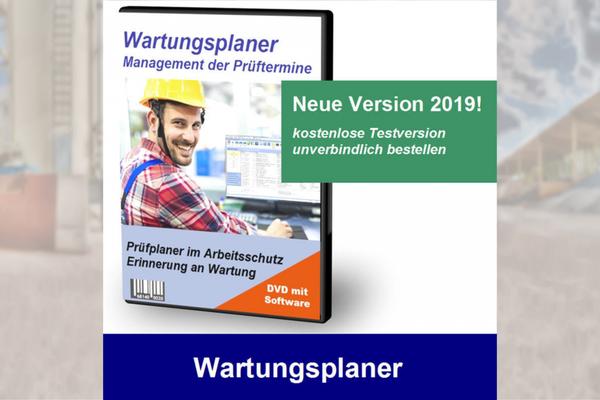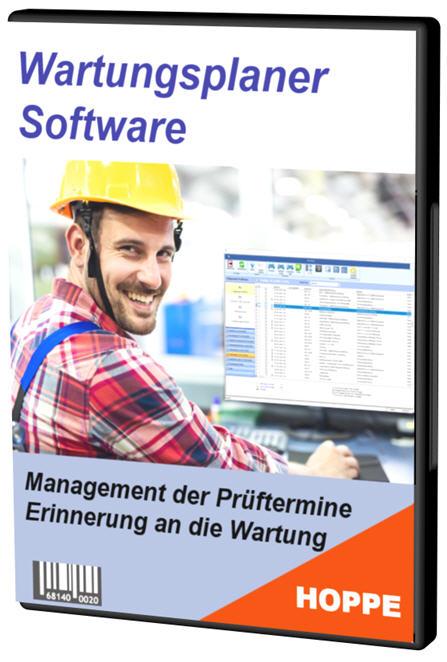Occupational health and safety is a permanent task for many companies in order to guarantee the well-being of their employees. Now, at the beginning of the year, is a good time to check whether the maintenance of machines and systems, inspection intervals and the corresponding legally compliant documentation are up to date. The personal protective measures brought about by the corona pandemic also presented occupational safety officers with completely new situations. There is still more information to manage. To ensure that those responsible do not lose track of the large number of tasks, it is advisable to use maintenance management software. This tool enables occupational health and safety professionals and EHS managers to create, archive and maintain documents with just a few clicks. The pandemic has changed the world of work. This also has profound implications for occupational health and safety.
Digital tools simplify the completion of daily tasks
Especially with regard to digital instruments for occupational safety, there are very useful tools to simplify the management of daily tasks. A maintenance planner software for the management of maintenance and repairs relieves those responsible significantly, because in the past two years new challenges have been added to the other tasks. It's not just about providing masks, but also about spatial separation as a technical measure in the company and much more. In addition, there are the legal requirements that must be complied with in order to guarantee the safety of employees.
On the one hand, the Occupational Safety and Health Act (ArbSchG) must be observed as the basis for operational occupational safety. It obliges employers to assess health hazards in the workplace of their employees and to take protective measures. It is supplemented by occupational health and safety regulations that contain specifications for workplace design, use of work equipment, noise protection or hazardous substances.
Manage numerous laws and regulations automatically
A particularly important part of occupational safety is making the workplace safe in order to avoid accidents at work and occupational diseases. For this, the employer is obliged to carry out a risk assessment in order to identify existing risks and to implement suitable protective measures. All these requirements are regulated by the Ordinance on Workplaces (ArbStättV), which contains minimum regulations for safety and health protection in workplaces, at the workplace and on construction sites. The aim is to avoid accidents that can happen on floors, traffic routes and stairs. Noise and vibrations can also damage employees, which is why the Noise and Vibration Occupational Health and Safety Ordinance precisely regulates the working conditions for those affected.
In addition to the obligation to create safe workplaces, companies must also ensure that the machines and systems are designed to be safe and demonstrate this with regular inspections, maintenance and repairs in an audit-proof manner. The safety of work equipment and systems is regulated by the Ordinance on Industrial Safety and Health. Here you will not only find fixed intervals for maintenance and inspections, but also information on the training of employees and the qualifications of inspectors.
Always keep an eye on test specifications with software
There are also numerous other regulations and laws that affect occupational safety: The Product Safety Act is the central legal regulation for the safety of devices, products and systems. The European Low Voltage Directive 2014/35/EU sets specifications for electrical equipment and Directive 2014/68/EU (Pressure Equipment Directive) ensures the safety of pressure equipment. The provision of pressure vessels and gas appliances is governed by Directive 2014/29/EU and Regulation 2016/426 on appliances that burn gaseous fuels and repealing Directive 2009/142/EC (Gas Appliances Regulation). The European Machinery Directive 2006/42/EG is central to the safety of machines, systems and components.

In view of the abundance of regulations, laws and specifications, it quickly becomes clear that it is not an easy task to keep an eye on the various test regulations and periods of the individual devices, machines and work equipment. Because occupational safety not only affects production facilities, but also equipment such as ladders, shelves, windows and doors. Even electrical systems and devices have to be checked regularly, as required by the accident prevention regulations of the professional associations (DGUV Regulation 3) and the regulations of the Association for Electrical, Electronic & Information Technologies (VDE). This applies to all devices with a plug, from coffee machines to printers.
Excel spreadsheets and databases are reaching their limits
Observing the intervals and carrying out the tests and maintenance is not enough. Everything must also be documented in accordance with the law. If there is no log that shows exactly when and with what result the technical qualification test took place, the company cannot prove in the event of damage that it did everything right. If the documentation is missing, the insurance company is not liable and professional associations refuse to provide benefits.
In order to meet the regulations for the maintenance, inspection and repair of machines and systems and to create the appropriate documentation, a lot of organizational effort is required. It is often Excel spreadsheets or self-developed databases that those responsible try to do justice to their task. However, these solutions eventually reach their limits, are error-prone and not suitable for legally compliant documentation. Specially developed tools for equipment maintenance are better. Such programs usually have all maintenance and repair instructions and include a calendar to plan the appointments. Since all test objects and the relevant object data are recorded, appointments can no longer be missed. Maintenance management software, for example, enables occupational health and safety professionals and EHS managers to create, archive and maintain documents with just a few clicks.
"On the one hand, our maintenance management software reduces the amount of work involved in a company's audit obligations and, on the other hand, test reports are always at hand during company audits," explains Ulrich Hoppe, Senior Consultant at Hoppe Management Consulting .de, for example, is subdivided into the classifications of maintenance, testing, repair, overhaul as well as test date and instruction. Important maintenance indicators are presented graphically and can be imported and exported in various formats.
Conclusion
Occupational health and safety is an important task in the company to ensure the health and safety of employees. With a view to Corona, this area has gained even more importance. A maintenance and repair tool is a smart option so that those responsible can organize the multitude of tasks in the best possible way. Software creates transparency and legal certainty in maintenance and repair management. Machine or system downtimes and work accidents are demonstrably reduced. Thanks to legally secure documentation, companies are also always prepared for inspections by the trade inspectorate.
Free demo CD and more information:
https://www.Wartungsplaner.deHOPPE BUSINESS CONSULTINGConsulting for information managementSeligenstädter Grund 863150 Heusenstamm
Phone: +49 (0) 61 04 / 6 53 27











Tips to do your electrical installa...
Companies in the Pinneberg district...
Maintal is becoming a smart city th...
New subway workshop and wash bay in...